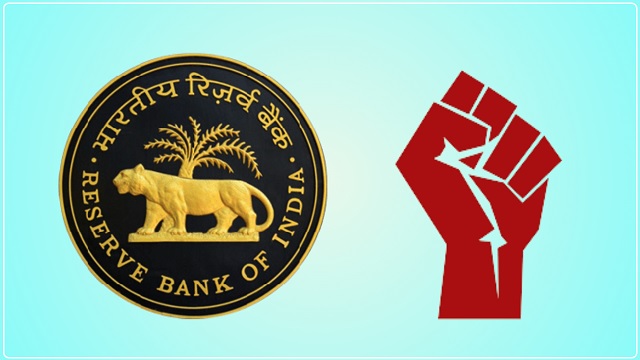
RBI is the central bank of INDIA. The central bank is an apex Bank. RBI controls the banking system of a country. RBI is a sole agency of note-issuing and controls the supply of money in the economy. In simple words, RBI serves as a banker to the government and manages the foreign exchange reserves of the country. For maintaining the management structure of RBI government appoints the directors, officials, etc.
The principal functions of the central bank RBI are as follows:
Bank of issuing notes:
The central bank of a country has the exclusive right of issuing notes. this is called the currency authority function of the central bank. the most important function of RBI is the printing and circulating of currency notes and coins the all over country, RBI is permitted to print currency up to 10,000 rupees notes.
Control of credit:
The main function of the central bank is to control the supply of credit in the economy. It implies an increase or decreases in the supply of money in the economy by regulating the ‘creation of credit’ by the commercial banks
Maintaining the country’s foreign exchange reserves:
RBI uses it to manage the foreign exchange reserves. It is managed by a process called reserve management.
Monetary policy is the policy to control the supply of credit /money in the economy. the main aim of this is to correct the situations of inflation and deflation in the economy, instruments of monetary policy are broadly classified as Quantitative instruments, and Qualitative instruments. It is also called instruments of credit control.
Quantitative instruments of credit control:
Three policy rates: Repo rate, Reverse Repo Rate, and Bank rate.
Two policy ratios: CRR, SLR
Open market operations.
Repo rate:
repo rate refers to the rate of interest at which RBI lends money to commercial banks. The commercial banks take a loan from RBI basically to correct their liquidity status .repo rate relates to the loans offered by the RBI to the commercial banks not without collateral. the securities are pledged as a security for loans. it allows the repurchase of securities can repurchase them at a later date .therefore, the repo rate is called repurchase rate.
It is a short-term borrowings by commercial banks. A rise in the repo rate would discourage the commercial banks to build their cash reserves for the creation of credit by way of borrowing from the RBI this reduces the supply of money by the commercial banks Thus, during inflation repo rate is increased when the supply of money needs to be curbed. during deflation, the repo rate is decreased, when the supply of money needs to be increased.
An increase in repo rate acts as a warning signal to the commercial banks to maintain healthy reserves of their vault cash. when the vault cash increases, the capacity to create credit is reduced. accordingly, the supply of money is reduced, the banks are induced to lower their vault cash. This increases their capacity to create credit. Accordingly, the supply of money is increased.
Reserve Repo Rate:
Reverse repo rate refers to the rate of interest at which the commercial banks can park (deposit) their surplus funds with the RBI.it also generate interest income by commercial banks. These funds have nothing to do with the legal cash reserve of the commercial banks with RBI (in compliance with CRR).
If the reverse repo rate is lowered, banks are discouraged to park their surplus funds with RBI .instead, the banks may use these funds as CRR funds with the RBI, and accordingly, increase the creation of credit .increase in money supply is required to curb deflation, as noted earlier. if there will be a rise in reverse repo rate will induce the commercial banks to park more funds with the help of RBI generated interest income this lowers their capacity to offer CRR funds to the RBI for the creation of credit. accordingly, the supply of money is reduced in the economy, as desired to curb inflation.
Bank Rate:
like repo rate, bank rate also refers to the rate at which the RBI lends money to the commercial banks. However, the nature of loans is different, because of some conceptual differences between bank rate and repo rate. It does not allow any facility for the repurchase of securities. The bank rate is simply the rate of discount. Bank rate relates to borrowing s by the commercial banks to cope with their immediate cash crunch.
CRR (cash reserve ratio):
this refers to the ratio between cash reserves of the commercial banks with the RBI and their demand deposits. This is fixed by the central bank and is varied from time to time to regulate the supply of money in the economy.
SLR (Statutory liquidity ratio):
This refers to the ratio between liquid assets of the commercial banks and their total deposits which they are legally required to maintain on daily basis. The liquid assets include: cash, gold, and unencumbered approved securities. SLR is fixed by the RBI and is varied from time to time. this is a significant policy ratio, used as an instrument of monetary policy. Like CRR, a rise in SLR signals that the banks need to maintain healthy reserves in liquidity.
Open market operations:
Open market operation refers to the sale and purchase of securities by RBI. By selling the securities like NCS- national saving certificate, the RBI soaks liquidity cash from the economy, and, by buying the securities, the RBI releases liquidity.
Qualitative Instruments of monetary policy:
- Margin requirement
- Rationing of credit
- Moral suasion
Margin requirement:
The margin requirement refers to the difference between the current value of the security offered for a loan called collateral and the value of the loan granted.
Rationing of credit:
Rationing of credit is known as the fixation of credit quotas for different business activities. The RBI fixes credit quota for different business activities.
Moral suasion:
Sometimes, the RBI makes the member banks agree through persuasion or pressure to follow its directives.
You may refer to this video if you want the explanation in Hindi






